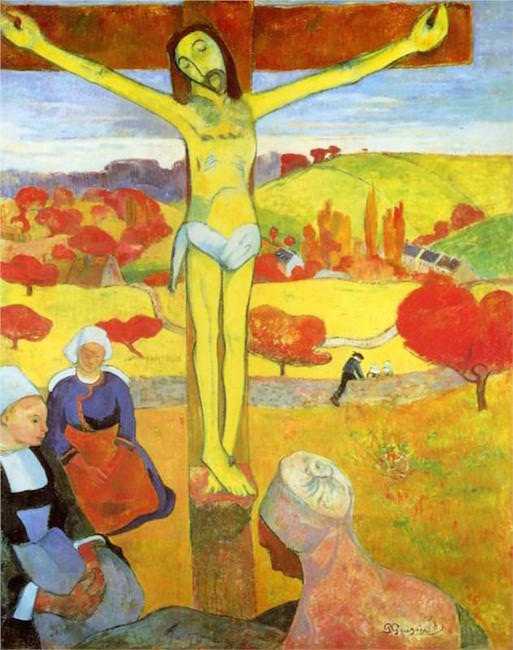Paul Gauguin
Episode #3 of the course “Prominent artists of Modern Art”
Born in France, Paul Gauguin spent his childhood in Peru, where he was greatly influenced by the native artwork of South Americans. His creative, bold, colorful works inspired artists to expand subjects to include people from different societies and social statuses.
Returning to France as an older child, he went to school before serving in the navy. Gauguin had a successful career as a stockbroker and took up painting as a hobby. He quit his job to begin painting full time in 1882. After traveling the Caribbean islands, including Martinique, he returned to France and befriended Vincent Van Gogh.
Gauguin and Van Gogh lived and worked together, and Gauguin was inspired to use the color and expression of movement seen in his painting The Yellow Christ of 1889. After additional travels to the Caribbean and Panama, he went to Tahiti, where he sculpted and carved wooden masterpieces like his Christ on the Cross.
 The Yellow Christ
The Yellow Christ
Gauguin was the first European to paint Polynesians, portraying a more global perception of beauty in works such as his Woman with a Flower. In 2015, one Tahitian painting depicting two young women entitled When Will You Marry? sold for a record-breaking $500 million.
 Woman with a Flower
Woman with a Flower
In 1897, recurring symptoms of illness began to affect Gauguin. Unable to paint for six months, he vowed to kill himself but wanted to complete one final work. His twelve-foot masterpiece Where do we come from? What are we? Where are we going? was the result.
 Where do we come from? What are we? Where are we going?
Where do we come from? What are we? Where are we going?
Critics were inspired not only by his inclusion of modern global concerns but also by his simplified use of line and color to change depictions of people around the world. Addicted to morphine and laudanum, Gauguin wrote against French colonialists in Tahiti and was convicted of libel. While awaiting appeal, he died in 1903.
Share with friends


